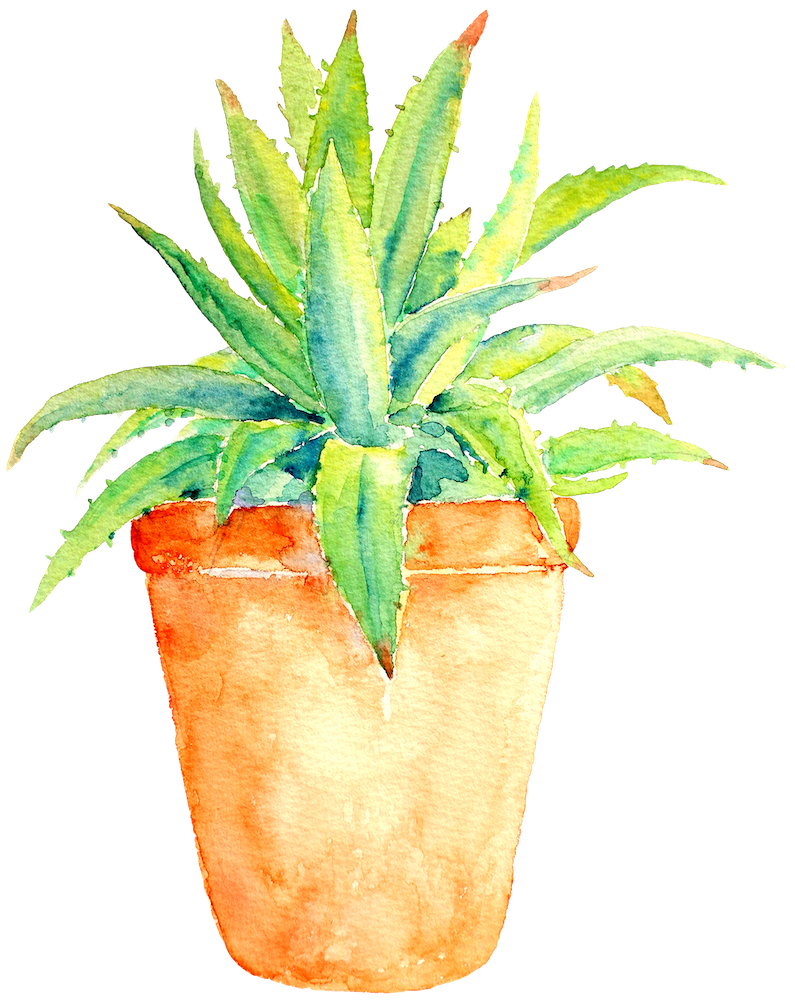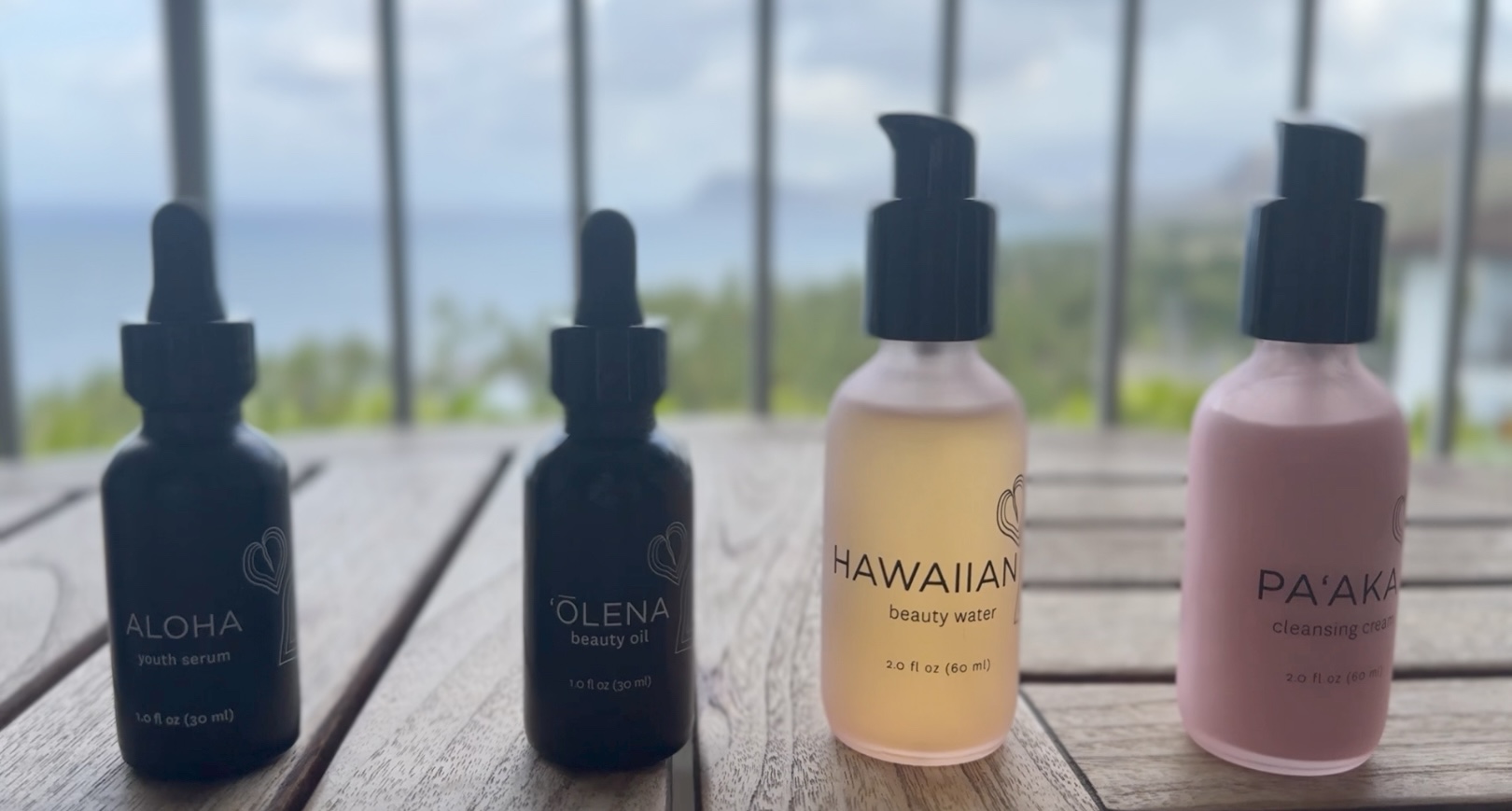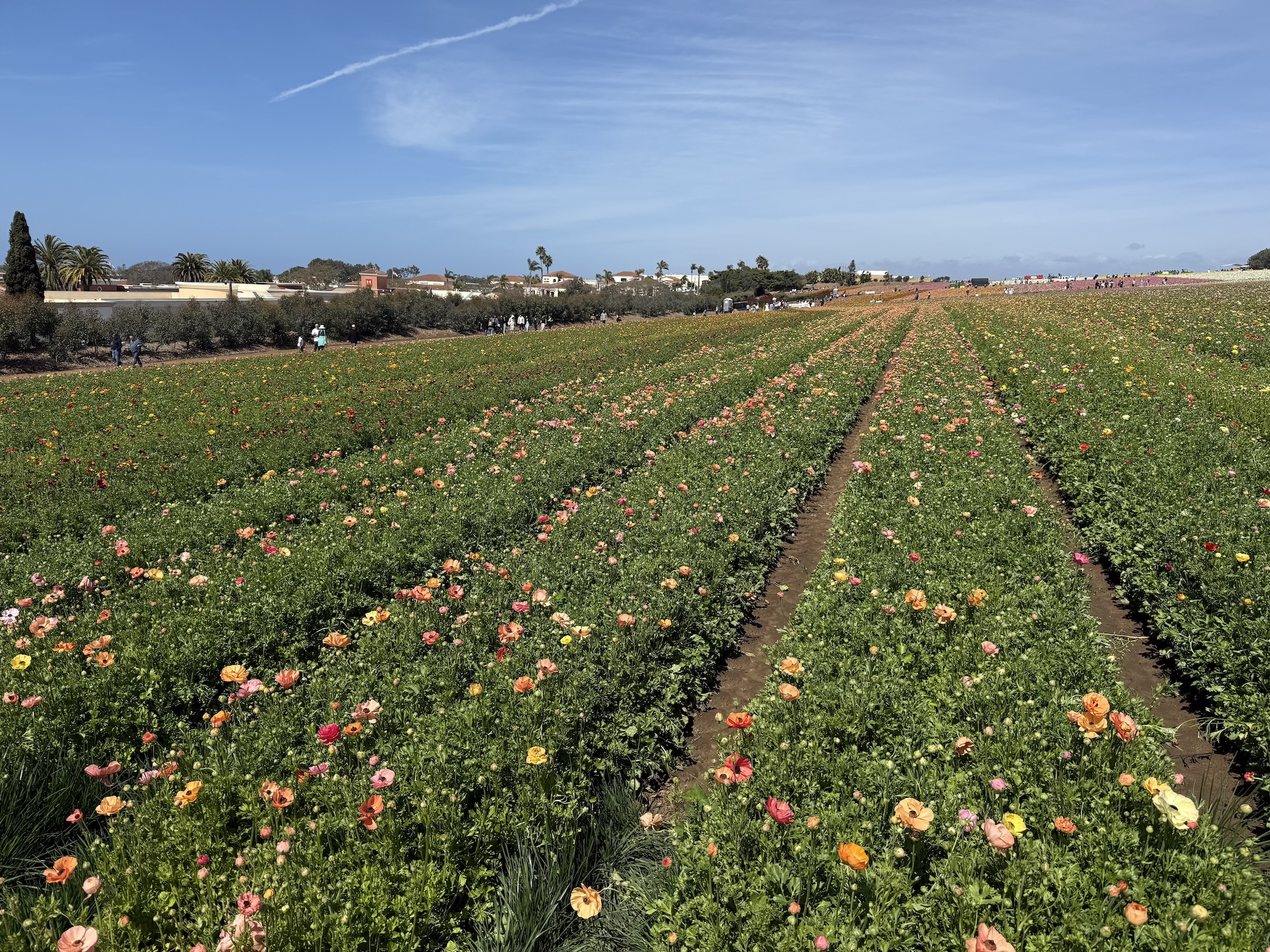Aloe Vera is a succulent plant that grows in arid climates. The thick fleshy stems are adapted to store water and nutrients for the plants. For thousands of years, Aloe vera juice has been used to cure a variety of conditions—most notably skin irritation.
Aloe produces two substances, gel
To obtain the juice from an Aloe vera plant:
- Cut off the leaves and separate them long sections, taking off the serrated and non-serrated edges.
- Carefully slide a knife along the top of the leaf, peeling it away. Inside is a gel-like substance known as mucilage. This gel is sterilized and filtered, then becomes what we recognize as Aloe.
- With the dull butter knife, gently scrape out the mucilage into a blender, avoiding the yellow colored pulp inside.
- Blend the gel until it reaches your desired consistency and move to a storable container.
How To Use Aloe Vera for Skin, Scalp & Natural Hair
Because of its composition, its wonderful to use as a natural carrier oil for in your skincare recipes. You can purchase Aloe Vera at the grocery store or use the fresh aloe vera from your garden. To use as a natural elixir, mix a tablespoon of fresh aloe vera with 1-2 drops of essential oils, such as eucalyptus or rosemary, to kill bacteria that causes redness from blemishes, warts, dandruff, and even fungus.
When purchasing products that feature aloe vera, look for products with the name Aloe Barbadensis Leaf Juice on the package ingredients. Aloe vera juice is the purest form you’ll find in cosmetics; most products use a diluted powder.

Ingredients
- 2-3 pieces fresh aloe vera
- Coconut oil
- Grapeseed Oil
- Lavender Essential Oil
- Your favorite essential oils, such as lemongrass or bergamot
Directions
- Melt 1/2 half of a cup of coconut oil in hot water. Be sure not to overheat the coconut oil, so you don’t destroy its healing and nutritional properties!
- Add two tablespoons of Aloe Vera gel. If you use fresh aloe vera from a live plant, be sure to keep your lotion in the refrigerator!
- Place the Aloe Vera gel and coconut oil into a bowl of ice water.
- Stir until coconut butter starts to thicken, approximately 4 minutes. Be sure to scrape the sides of the bowl, as the coconut oil solidifies
- When coconut oil small peaks, remove from the ice water.
- Add two teaspoons of grapeseed oil. Combine until smooth.
- Add 10 drops of lavender essential oil, adjust the amount to your preference.
Next time you hit the beach, make sure you pack your customized Aloe Vera Gel (and an extra bottle of sunscreen).
What Are The Benefits Of Aloe Vera?
Aloe is made of up 99% water, but contains several active compounds that aid in healing skin.
Specifically, its gel contains glycoproteins, which can speed up healing processes through decreasing inflammation and pain. Also, Aloe gel contains polysaccharaides, which stimulate skin growth and repair. The anti-inflammatory properties of aloe can also be combined with the soothing effects of other oils.
A study comparing the healing effects of Aloe to Silver Sulfadiazine, a topical antibiotic, found that those who were treated with aloe vera healed an average of 9 days sooner than those treated without the plant.
While Aloe Vera is considered an extremely safe method of soothing wounds, it is important to note that it should not be applied to deep or open wounds. Aloe rarely causes allergic reactions, but if your skin becomes irritated upon application of Aloe, stop using it immediately and consult a physician.



